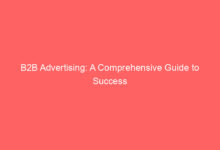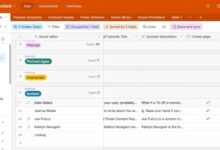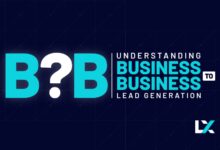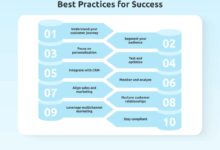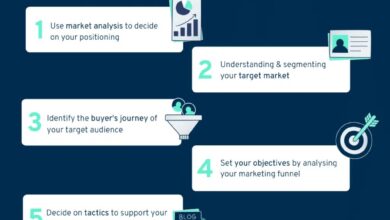B2B Lead Scoring: 7 Powerful Strategies to Skyrocket Sales
Ever wonder why some sales teams close deals faster and more consistently? The secret often lies in one powerful tool: b2b lead scoring. It’s not magic—it’s smart data-driven strategy.
What Is B2B Lead Scoring and Why It Matters

B2B lead scoring is a systematic method used by sales and marketing teams to rank prospects based on their perceived value to the organization. This value is determined by a combination of demographic, behavioral, and firmographic data. The goal? To identify which leads are most likely to convert into paying customers.
Defining B2B Lead Scoring
At its core, b2b lead scoring assigns numerical values—positive or negative—to potential customers based on specific criteria. These criteria typically include job title, company size, industry, engagement with content (like email opens or webinar attendance), and website behavior.
- Positive scores are given for actions that indicate interest, such as downloading a whitepaper.
- Negative scores may be applied for inactivity or disengagement.
- The total score helps prioritize which leads should be passed to sales.
This process transforms a chaotic influx of leads into a streamlined, prioritized pipeline. Without it, sales teams risk wasting time on unqualified prospects while high-potential leads slip through the cracks.
Why B2B Lead Scoring Is a Game-Changer
In the B2B world, where sales cycles are long and complex, efficiency is everything. According to HubSpot, companies using lead scoring experience a 77% increase in lead generation ROI. That’s not a typo—it’s transformative.
“Lead scoring bridges the gap between marketing and sales by creating a shared language of qualification.” — Marketo
It aligns marketing and sales teams around a common definition of a “qualified lead,” reducing friction and improving conversion rates. When both departments agree on who’s ready to buy, the entire revenue engine runs smoother.
The Core Components of Effective B2B Lead Scoring
To build a successful b2b lead scoring model, you need to understand its two foundational pillars: explicit and implicit scoring. These components work together to paint a complete picture of a lead’s readiness to buy.
Explicit Scoring: The Who and What
Explicit scoring is based on data that is directly provided by the lead. This includes firmographic and demographic information such as:
- Job title (e.g., CTO, Director of IT)
- Company size (number of employees or annual revenue)
- Industry (e.g., SaaS, manufacturing, healthcare)
- Geographic location
- Technology stack (if known)
For example, if your product is enterprise-level cybersecurity software, a lead with the title “Chief Information Security Officer” at a Fortune 500 company would receive a high explicit score. This data is usually collected through forms, CRM integrations, or third-party data providers like LinkedIn Sales Navigator.
Implicit Scoring: The How and When
Implicit scoring evaluates a lead’s behavior—how they interact with your brand. This includes:
- Website visits (especially to pricing or product pages)
- Email engagement (opens, clicks)
- Content downloads (whitepapers, case studies)
- Event attendance (webinars, demos)
- Social media interactions
A lead who repeatedly visits your pricing page and attends a live demo is showing strong buying intent. These actions should trigger higher implicit scores. Tools like Marketo and HubSpot automate this tracking, making it easier to assign accurate scores in real time.
7 Proven Strategies for Implementing B2B Lead Scoring
Implementing b2b lead scoring isn’t a one-size-fits-all process. It requires strategy, collaboration, and continuous optimization. Here are seven powerful strategies to ensure your model delivers results.
1. Align Sales and Marketing Teams
One of the biggest pitfalls in b2b lead scoring is misalignment between sales and marketing. Marketing may define a “qualified lead” based on engagement, while sales demand specific job titles or budget readiness.
To fix this, hold regular alignment meetings. Use a Service Level Agreement (SLA) to define:
- What constitutes a Marketing Qualified Lead (MQL)
- What makes a Sales Qualified Lead (SQL)
- How quickly sales will follow up on MQLs
This shared understanding ensures that leads passed to sales are truly ready for conversation, reducing friction and increasing trust.
2. Start Simple, Then Iterate
Don’t try to build a perfect scoring model on day one. Begin with a basic framework—maybe just 3-5 criteria—and refine it over time. For example:
- +10 points for job title = Decision Maker
- +15 points for company size > 1,000 employees
- +20 points for attending a demo
- -5 points for no email engagement in 30 days
Monitor conversion rates and adjust weights based on what actually correlates with closed deals. As Salesforce reports, companies that iterate their scoring models see up to 30% higher conversion rates.
3. Use Negative Scoring to Filter Out Poor Fits
Most teams focus on adding points for positive behavior, but negative scoring is just as important. It helps eliminate leads that look good on paper but are unlikely to convert.
Examples of negative scoring triggers:
- Visiting the careers page instead of product pages
- Downloading content unrelated to your core offering
- Using a personal email address (e.g., Gmail) for a B2B product
- High bounce rate on emails
This prevents your sales team from chasing dead ends and keeps the pipeline clean.
4. Leverage Firmographic Data Wisely
Firmographics—company size, industry, revenue, location—are critical in b2b lead scoring. But not all firmographics are equally valuable.
Ask: Which industries have the highest lifetime value? Which company sizes close fastest? Use historical CRM data to identify patterns. For instance, if 80% of your closed deals come from companies with 500–5,000 employees, prioritize leads in that range.
Tools like Clearbit and ZoomInfo enrich your CRM with accurate firmographic data, making scoring more precise.
5. Incorporate Behavioral Triggers
Behavioral data is often the most predictive indicator of buying intent. Set up automated triggers in your marketing automation platform to score leads in real time.
Examples of high-intent behaviors:
- Multiple visits to the pricing page
- Watching a product demo video
- Requesting a trial or consultation
- Engaging with sales content (e.g., ROI calculators)
When these actions occur, automatically increase the lead’s score and notify the sales team. This ensures timely follow-up when interest is highest.
6. Set Clear Thresholds for Lead Handoff
Without clear thresholds, your b2b lead scoring system becomes meaningless. Define exact score ranges that trigger specific actions:
- 0–49: Nurture with educational content
- 50–79: Send targeted offers and case studies
- 80–100: Automatically route to sales for immediate follow-up
This creates a predictable, scalable process. According to Gartner, companies with defined lead handoff criteria see 2x faster sales cycles.
7. Continuously Monitor and Optimize
B2B lead scoring isn’t a “set it and forget it” system. Markets change, buyer behavior evolves, and product offerings shift. Regularly audit your scoring model to ensure it remains accurate.
Key metrics to track:
- Conversion rate from MQL to SQL
- Lead-to-customer rate
- Average deal size by lead score
- Sales team feedback on lead quality
Use A/B testing to experiment with different scoring weights. For example, test whether “demo attendance” should be worth 20 or 30 points. Data-driven refinement keeps your model sharp.
Common Mistakes to Avoid in B2B Lead Scoring
Even well-intentioned teams make mistakes when implementing b2b lead scoring. Avoiding these pitfalls can save time, money, and frustration.
Overcomplicating the Model
It’s tempting to include dozens of scoring criteria, but complexity kills adoption. A model with 50 variables is hard to explain, maintain, and trust.
Stick to the 80/20 rule: focus on the 20% of factors that drive 80% of conversions. Simplicity increases transparency and makes it easier for sales to understand why a lead was prioritized.
Ignoring Sales Feedback
Sales teams are on the front lines. If they consistently say leads are unqualified, your scoring model is broken—even if the data says otherwise.
Establish a feedback loop: after each lead interaction, ask sales to rate the lead’s quality. Use this input to recalibrate your scoring criteria. This collaborative approach builds trust and improves accuracy.
Failing to Segment Leads
Not all leads are the same. A one-size-fits-all scoring model may work for small businesses, but in B2B, segmentation is crucial.
Consider creating separate scoring models for:
- Different product lines
- Geographic regions
- Industry verticals
- Buyer personas (e.g., technical vs. executive buyers)
A lead in the healthcare sector may have different buying signals than one in fintech. Customization increases relevance and conversion.
How Technology Powers Modern B2B Lead Scoring
Today’s b2b lead scoring systems are powered by sophisticated tools that automate data collection, analysis, and lead routing. Choosing the right technology stack is essential for scalability and accuracy.
Marketing Automation Platforms
Platforms like HubSpot, Marketo, and Pardot are the backbone of b2b lead scoring. They track user behavior, assign scores automatically, and sync with CRM systems.
- HubSpot offers intuitive drag-and-drop scoring workflows.
- Marketo provides advanced segmentation and behavioral tracking.
- Pardot, part of the Salesforce ecosystem, integrates seamlessly with Sales Cloud.
These tools allow marketers to set up complex scoring rules without coding, making adoption easier across teams.
CRM Integration Is Non-Negotiable
Your b2b lead scoring model is only as good as its integration with your CRM. Without it, scores live in silos and sales teams can’t act on them.
Ensure your marketing automation tool syncs lead scores directly to CRM records. This gives sales reps instant visibility into lead readiness. For example, in Salesforce, a lead score can appear as a field on the lead record, color-coded for urgency.
“If your CRM doesn’t reflect real-time lead scores, you’re flying blind.” — Sales Enablement Pro
Leveraging AI and Predictive Scoring
The future of b2b lead scoring lies in artificial intelligence. Predictive lead scoring uses machine learning to analyze historical data and identify patterns that humans might miss.
Tools like InsideSales, PeopleData, and 6sense go beyond rule-based scoring. They predict which leads are most likely to buy based on thousands of data points, including intent signals from third-party networks.
For example, if a lead’s company is actively searching for “cloud migration tools” across the web, 6sense can detect that intent and boost the lead’s score—even before they visit your site.
Measuring the Success of Your B2B Lead Scoring Strategy
Implementing b2b lead scoring is just the beginning. To prove its value, you need to measure its impact on key business outcomes.
Key Performance Indicators (KPIs)
Track these metrics to evaluate your scoring model’s effectiveness:
- Lead Conversion Rate: Percentage of scored leads that become customers.
- Sales Cycle Length: Time from lead creation to close. Effective scoring should shorten this.
- Marketing-Qualified Lead (MQL) Volume: Are you generating more high-quality leads?
- Sales Acceptance Rate: Percentage of MQLs that sales accepts as valid.
- Revenue Attribution: How much revenue comes from scored leads vs. unqualified ones?
Use dashboards in your CRM or analytics platform to monitor these KPIs monthly.
Conduct Regular Scoring Audits
Every quarter, conduct a scoring audit. Pull a sample of leads and analyze:
- Did high-scoring leads convert?
- Did low-scoring leads remain cold?
- Were there false positives (high score, no conversion)?
- False negatives (low score, but they bought)?
This helps identify flaws in your criteria or weighting. For instance, if many leads with “Manager” titles convert, but your model only scores “Directors” and above, you’re missing opportunities.
Calculate ROI of Lead Scoring
To justify investment in b2b lead scoring, calculate its return on investment. Use this formula:
ROI = (Revenue from Scored Leads – Cost of Scoring Tools & Labor) / Cost of Scoring Tools & Labor
If your scoring system costs $10,000/year but generates $150,000 in revenue from better-qualified leads, your ROI is 1400%. That’s a compelling case for continued investment.
Real-World Examples of B2B Lead Scoring in Action
Theory is great, but real-world examples show just how powerful b2b lead scoring can be.
Case Study: SaaS Company Reduces Sales Cycle by 40%
A mid-sized SaaS company offering project management software struggled with long sales cycles and low conversion rates. They implemented a b2b lead scoring model with the following criteria:
- +25 points for visiting the pricing page 3+ times
- +30 points for attending a live demo
- +20 points for company size > 200 employees
- -10 points for no engagement in 14 days
Leads scoring 80+ were routed to sales within 15 minutes. Within six months, their sales cycle shortened by 40%, and conversion rates from MQL to customer increased by 65%.
Case Study: Enterprise Tech Firm Boosts Lead Quality
An enterprise cybersecurity provider used predictive lead scoring via 6sense to identify accounts showing intent signals. They combined this with firmographic data from ZoomInfo.
Result: Sales acceptance rate of MQLs jumped from 55% to 88%, and deal size increased by 22% because they focused on high-intent, high-value accounts.
How Startups Can Implement B2B Lead Scoring on a Budget
You don’t need a massive budget to start. A startup offering HR software used HubSpot’s free tier to build a simple scoring model:
- +10 for job title = HR Manager or Director
- +15 for downloading a case study
- +20 for requesting a demo
- Automated email sequences for leads under 50 points
Even with limited resources, they improved lead qualification and reduced wasted sales time by 50%.
What is b2b lead scoring?
B2B lead scoring is a methodology used to rank leads based on their likelihood to become customers, using demographic, firmographic, and behavioral data to assign scores that help prioritize sales efforts.
How do you calculate a lead score?
Lead scores are calculated by assigning point values to specific attributes (like job title or company size) and behaviors (like email clicks or demo attendance). Positive and negative points are summed to create a total score that determines lead priority.
What tools are best for b2b lead scoring?
Top tools include HubSpot, Marketo, Pardot, Salesforce, and predictive platforms like 6sense and Clearbit. These integrate with CRMs to automate scoring and lead routing.
How often should you update your lead scoring model?
Review and update your model at least quarterly. Market changes, product updates, and sales feedback can all impact scoring accuracy, so regular optimization is critical.
Can small businesses benefit from b2b lead scoring?
Absolutely. Even simple scoring models help small teams focus on the right leads, improve conversion rates, and make better use of limited sales resources.
B2B lead scoring isn’t just a tactic—it’s a strategic advantage. By systematically ranking leads based on data, you empower your sales team to focus on high-potential prospects, shorten sales cycles, and drive revenue growth. The key is to start simple, align teams, leverage technology, and continuously optimize. Whether you’re a startup or an enterprise, a well-executed b2b lead scoring strategy can transform your pipeline from chaotic to predictable—and from predictable to profitable.
Further Reading:
